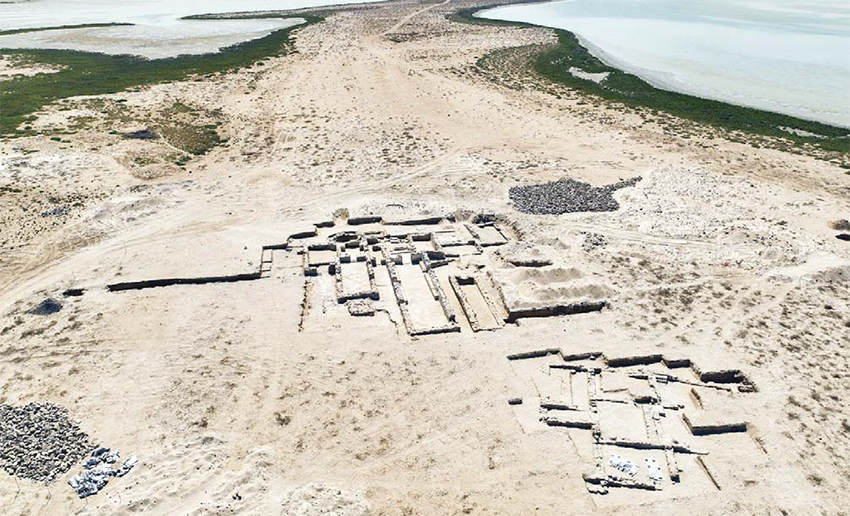03/11/2022
03/11/2022
SINIYAH ISLAND, UAE, Nov 3, (AP): An ancient Christian monastery possibly dating as far back as the years before Islam spread across the Arabian Peninsula has been discovered on an island off the coast of the United Arab Emirates, officials announced Thursday. The monastery on Siniyah Island, part of the sand-dune sheikhdom of Umm al- Quwain, sheds new light on the history of early Christianity along the shores of the Arabian Gulf. It marks the second such monastery found in the Emirates, dating back as many as 1,400 years - long before its desert expanses gave birth to a thriving oil industry that led to a unified nation home to the high-rise towers of Abu Dhabi and Dubai.

The two monasteries became lost to history in the sands of time as scholars believe Christians slowly converted to Islam as that faith grew more prevalent in the region. Today, Christians remain a minority across the wider Middle East, though Pope Francis arrived in nearby Bahrain on Thursday to promote interfaith dialogue with Muslim leaders. For Timothy Power, an associate professor of archaeology at the United Arab Emirates University who helped investigate the newly discovered monastery, the UAE today is a “melting pot of nations.” “The fact that something similar was happening here a 1,000 years ago is really remarkable and this is a story that deserves to be told,” he said.
The monastery sits on Siniyah Island, which shields the Khor al-Beida marshlands in Umm al-Quwain, an emirate some 50 kilometers (30 miles) northeast of Dubai along the coast of the Arabian Gulf. The island, whose name means “blinking lights” likely due to the effect of the white-hot sun overhead, has a series of sandbars coming off of it like crooked fingers. On one, to the island’s northeast, archaeologists discovered the monastery. Carbon dating of samples found in the monastery’s foundation date between 534 and 656.
Islam’s Prophet Muhammad (PBUH) was born around 570 and died in 632 after conquering Makkah in present-day Saudi Arabia. Viewed from above, the monastery on Siniyah Island’s fl oor plan suggests early Christian worshippers prayed within a single-aisle church at the monastery. Rooms within appear to hold a baptismal font, as well as an oven for baking bread or wafers for communion rites. A nave also likely held an altar and an installation for communion wine. Next to the monastery sits a second building with four rooms, likely around a courtyard - possibly the home of an abbot or even a bishop in the early church.


